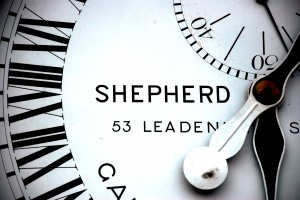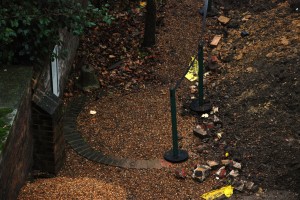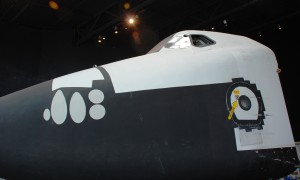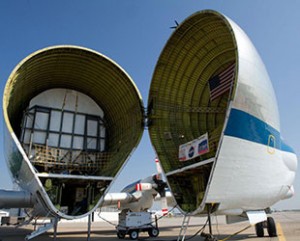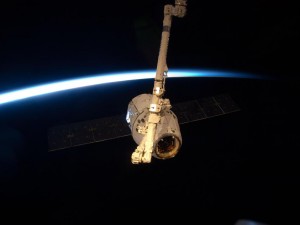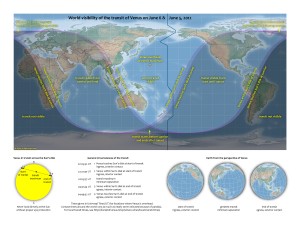Because we can never have too many Hot Wheels.
At the Track: Mars Curiosity
1 08 2012Comments : Comments Off on At the Track: Mars Curiosity
Categories : Ephemera, Mars Science Laboratory, News
Wallpaper Wednesday
1 08 2012You didn’t forget about me, did you? I’m about to land on Mars!
Mars Landing: 5-6 August 2012
10:31 pm Pacific, 5 August
11:31 pm Mountain, 5 August
12:31 am Central, 6 August
01:31 am Eastern, 6 August
05:31 am Universal, 6 August
Watch it live online at:
mars.jpl.nasa.gov
nasa.gov (NASA TV)
jpl.nasa.gov (Ustream)
Click on the image to download the JPL MSL wallpaper.
Comments : Comments Off on Wallpaper Wednesday
Categories : Instruments, Mars Science Laboratory, News, Wallpaper
Greenwich Observatory
30 07 2012I’ve yet to talk about my own research on this site, mostly because I’d like this to remain a ‘fun’ space, related to—but not dominated—by my real work. I’ve had an article on the relationship between Empire and the first Astronomer Royal under review for most of the past year, making me even more reluctant to write here about the Greenwich Observatory (RGO) for fear of scooping/contradicting/boring myself. But the observatory has been on my mind this week, so I decided to throw up a few photos I took during a winter visit.
Once you climb to the top of Observatory Hill (because of course you’re going to want to walk up there from Greenwich), you enter the observatory through an iron gate. To the right of the gate is the 24-hour Shepherd Clock, designed in 1852. Originally, the clock displayed astronomical time, but now it shows Greenwich Mean Time (of course). It may or may not reflect your time of arrival accurately, since it doesn’t keep track of British Summer Time. The Shepherd Clock is a slave clock, meaning that it’s controlled by a master clock elsewhere in the observatory.[1] Flamsteed would have been a lot less frustrated if the clock had existed during his tenure at the observatory. On the other hand, he had two Thomas Tompion clocks at hand, making him one of the most time-rich observers in London at the time.
If there’s one thing visitors know about the RGO, it’s that a brightly colored “time ball” drops every day at 13:00 GMT (BST in the summer). In theory, boaters on the Thames can synchronize their timepieces by the daily ball drop. In practice, boaters stopped looking to the observatory for this soon after the Great War, when the radio started providing time pips.
This unassuming patch of gravel is one of my favorite parts of the observatory. Once upon a time, this was the site of the well telescope. For many years, the existence of a well telescope at Greenwich was a matter of debate: did Flamsteed actually sink a shaft, install spiral stairs, and make nightly observations from the floor of the well? P.S. Laurie argued for the existence of a hole in which Flamsteed placed a telescope with a 87.5 foot focal length (seriously!).[1] In theory (again), Flamsteed used the instrument to observe gamma Draconis as it crossed the zenith, with the intent of compiling enough observations to calculate the star’s annual parallax. In practice, the well telescope was a failure. For one thing, Flamsteed had to lie on his back to use it. There’s no comfort to be found in lying on one’s back in the middle of the night at the bottom of the well. For another thing, the lens was chipped and cloudy and of little use to the astronomer.[2]
If I described all of the nifty things to see at the RGO (the time galleries, the camera obscura, the 28-inch refractor), you’d be reading this page for another several hours. You won’t be bored, and the planetarium and the Astronomy Centre have plenty of interactive exhibits to entertain the children. I’m not a child, but I spent quite a bit of time crashing imaginary spacecraft the last time I was in the Astronomy Centre. But take heed:
At the moment, the observatory is closed to the public. Why? Take a look at the view from the north side of Flamsteed House.
If you’ve been watching the 2012 Olympics, you probably recognize that Neoclassical building. The garden facade of the Queen’s House is getting quite a bit of air time, serving as a backdrop to the dressage and other equestrian events. Behind the Queen’s House and the National Maritime Museum, across the Thames, loom the Docklands. Just to the left of the Queen’s House, above the colonnade, you can see the line of the river and the embankment of the Isle of Dogs. If you cross to the Isle of Dogs and travel north past the skyscrapers (the building with the pyramidal top is the Canary Wharf Tower), across the A11, you will soon find yourself in Olympic Park.
The good news—if you’re in town for the duration of the Olympics, you need only hang on until August 4, when the RGO opens again to the public. Have a nice visit and say hello to the shell of Herschel’s telescope for me.
————————-
[1] It’s no longer controlled by a clock, but by a new quartz mechanism inside the building. The original master isn’t in working condition, but you can see it in the time galleries all the same.
[2] P. S. Laurie, “Flamsteed’s Well,” The Observatory 76 (1956): 24-5.
[2] A. Hunter and E. G. Martin, “The Flamsteed 90-Foot Lens,” The Observatory 76 )1956) 25-6.
Comments : Comments Off on Greenwich Observatory
Categories : Instruments, News, Observatories
Shuttle Trainer
28 07 2012The above photo explains the timing of our visit to the Museum of Flight in Seattle: we wanted to see the package NASA dropped at Boeing Field a few weeks ago. While I’m sure the Board and employees of the Museum of Flight were disappointed by NASA’s decision to send the retired Shuttle fleet elsewhere, they must have been intrigued by the consolation prize, the Full Fuselage Trainer (FFT). A full-scale mock up of a Space Shuttle, the FFT served as a training ground for every Shuttle crew, allowing the astronauts to practice emergency egress and EVA procedures. The FFT has been arriving piece by piece (the aft section of the payload bay arrived earlier this week) and instead of waiting for the entire “spacecraft” to show up, the curators have been putting the pieces on display as they arrive.
I’m not sure how I would feel about it as a curator. Letting an exhibit go up before everything was in place would probably make me anxious. And the Charles Simonyi Space Gallery, the new home of the FFT, has an incomplete, cavernous feel to it at the moment as it sits more than half empty. On the other hand, anticipation is building and has been since the first shipment arrived via the Super Guppy. It’s a bold and quite possibly brilliant curatorial decision, inviting the public to witness the building process. Each Super Guppy touchdown is an opportunity for another press release; each component installed is a reason for visitors to return to the gallery. By the exhibit is complete, the community will be completely invested in the project and hopefully the financially longevity of the museum.
At present, though, the gallery is mostly empty, with a few smaller (intriguing!) exhibits holding down its edges. As in the Great Gallery, the wall of glazing at the front of the building creates a difficult lighting situation for photography and I spent a lot of time trying to find a setting that compensate for the glare without erasing the details of the FFT.
As you can see from the photo at the top of this post, the nose of the FFT consists massive wooden shell painted with matte black. The auto focus on my camera refused to cooperate for close up photos and even when I pulled back, the (lack of ) contrast between the black wood and the black walls of the gallery forced me rely on manual focus.
I’ve uploaded a few more photos to my flickr site. I’m looking forward to going back and documenting the completed trainer one day soon.
Comments : Comments Off on Shuttle Trainer
Categories : Crew Trainer, Museums, News, Space Shuttle, Tourism
Wallpaper Wednesday
25 07 2012I would have loved to provide a glossy HD wallpaper of STS-7 in honor of Sally Ride’s first flight into space. Unfortunately, high-def images were almost non-existent in 1983 and I don’t have it in me to search for them (only a masochist runs a Google image search on the words “Space Shuttle Challenger”.) The image above links to NASA’s image gallery for Sally Ride and that’s going to have to do for now. Maybe I’ll write up something more comprehensive in a couple weeks.
ETA: I’ll come back to this later, but for now let me say this: Sally Ride gave me a lot when I was in high school. She didn’t have to do that and I’m grateful for her willingness to endure the invasions to her privacy in the 1980s. At the same time, as an academic, I can’t help but note the fundamental disconnect between the continued guarding of that privacy in the 2000s and her dedication to furthering the position of girls and women in science. I’m not a scientist, I’m in an allied field—the history of astronomy, not astronomy itself. Even so, I can say that my career in science studies has been affected by the fact that I’m a lesbian. One significant example: the financial award attached to my Fulbright-Hays DDRA fellowship was less than it would have been had I been heterosexual. The straight members of my Fulbright cohort were given money to support a spouse during their tenures as fellows. Even though my partner and I had been together for fifteen years at that point, I spent my research year by myself in another country, the support for my spouse legally withheld thanks to DOMA. Every time I opened up the Fulbright handbook to look up some regulation or other, I had to page by the DOMA statement that reminded me that I wasn’t an equal to other scholars in my field (I eventually got tired of being angry and deleted that page from the handbook). No matter how good my work is (and my fellowship record suggests it’s pretty good), I’ll never be treated as an equal as long as discrimination against lgbtq is legal in the United States.
And that’s the contradiction I see in Ride’s legacy. On one hand, she tirelessly worked to move young women into the sciences. On the other hand, she appears to have left unchallenged a very real stumbling block for some of those young women (appears to have left…I can only go by what the press is giving me right now). Does that mean I’m less grateful for, less appreciative of what she did for women and the world at large? No, not at all. But I don’t think it’s going to help any aspiring scientist if we ignore the larger implications of her choices. Coming out posthumously…well, I don’t think that erases the contradiction between the two positions.
Comments : Comments Off on Wallpaper Wednesday
Categories : Challenger, NASA, News, Space Shuttle, Wallpaper
Super Guppy Delivers
1 07 2012If you’ve been following the dispersal of the Space Shuttles to various museums around the U.S., you may have been struck by the variety of transportation methods used by NASA to relocate the retired fleet. Discovery traveled to its new home at the Steven F. Udvar-Hazy Center in Chantilly, Virginia, on the back of NASA 905 SCA. Explorer traveled to Houston by barge. Enterprise combined those two methods to arrive in New York. Later this year, Endeavour will piggy back on NASA’s jet to LAX, after which point it will travel by flatbed up the Santa Monica Freeway to the California Science Center. The journey, arrival, and unloading of the Shuttles have made for some riveting television for space enthusiasts.
This weekend, when the crew cabin of the Space Shuttle Trainer (aka Full Fuselage Trainer, or FFT) arrived at Boeing Field for installation in Seattle’s Museum of Flight, we saw yet another method for moving equipment. It is safe to say that Seattlites are accustomed to seeing a lot of air traffic and they can be somewhat jaded when it comes to flying objects (listen to the complaints about the Blue Angels during Seafair if you don’t believe me). But it’s not often the Super Guppy buzzes the Space Needle, much less lands and parks in a museum parking lot. I’d say it was a once-in-a-lifetime experience, but the Super Guppy should touch down at Boeing Field twice more to deliver two sections of the payload bay. If you’d like to witness one of those landings, keep an eye on the Museum of Flight’s webpage for scheduled arrival dates. In the meantime, enjoy some sweet photos of yesterday’s landing courtesy of the Seattle Times.
Comments : Comments Off on Super Guppy Delivers
Categories : Crew Trainer, Museums, NASA, News, Space Shuttle, Tourism
Wallpaper Wednesday
6 06 2012
SDO's Ultra-high Definition View of 2012 Venus Transit --- Path Sequence. Image credit: NASA/SDO/AIA
Was there any doubt that I’d be looking for a wallpaper featuring yesterday’s Transit of Venus? I’m happy to report that we didn’t have to rely on SDO images (as spectacular as they are!) to view it. We had mostly clear skies, warm evening temperatures, and lots of viewing equipment. I had my doubts as to whether we’d be able to view it with the naked eye—that is, the naked eye with protection—but it was easy to see through eclipse glasses. I used a solar projector made with a pair of binoculars. That was a last-minute project, but it made beautiful images, complete with cloud cover, sun spots, and Venus. We attended a public viewing event for part of the evening, courtesy of the DNR, Stonebelt Stargazers, and the Indiana University Astronomy Club, so we also had some excellent views through 8″ and 10″ telescopes. You can see a few photographs, including one from the solar projector showing Venus against the backdrop of the Sun, on my flickr site.
Click on the image to download today’s wallpaper.
Comments : Comments Off on Wallpaper Wednesday
Categories : Instruments, NASA, News, Wallpaper
Wallpaper Wednesday
30 05 2012Think of me sometime between 2:30-4:30 a.m. EDT, when I’ll be in bed with my iPhone, watching the NASA TV coverage of the un-berthing of Dragon. Think of me again about five hours later, when I’ll be struggling to be productive on three hours of sleep.
Click on the image to download wallpaper in (NASA’s) standard sizes.
Comments : Comments Off on Wallpaper Wednesday
Categories : NASA, News, SpaceX, Wallpaper
Transit of Venus, 5-6 June 2012
29 05 2012Next Tuesday/Wednesday (depending on your location on Earth), you may have the opportunity to witness the transit of Venus, or a view of the planet against the backdrop of the Sun. Once every century or so, Venus passes between Earth and the Sun, presenting itself as a moving black spot. Actually, transits happen twice every century or so. Every 105.5 or 121.5 years, Venus passes between us and the Sun; eight years later, it passes by again. But after that second pass, we need to wait another 105.5 or 121.5 years. The last transit was in 2004, so if you miss this one, you’re out of luck in this lifetime.
In theory, viewing a transit is easy. It takes hours—typically around six—for Venus to complete the crossing. But ideal viewing requires ideal positioning: if you’re on the Pacific Rim, you may be able to follow the entire transit; if you’re in North America, you’ll only see the beginning of it; in Europe, west and south Asia, Africa, or western Australia, you’ll see only the end of it. Check with your local astronomy club or observatory to see if they’ve planned any special viewing events (more on that at the end of this post).
Eye protection: again, easy in theory. Those eclipse shades or #14 welding glass you bought for viewing the recent solar eclipse will work for this, too, as long as you have better eyesight than I do. I’m not likely to see Venus with the naked eye. This means I need to use the appropriate solar filters and projectors on my telescope, or go find someone else with this equipment, since going blind is not on my agenda this summer. For some safety advice and a list of helpful equipment suggestions, visit transitofvenus.org.
We’ll be heading down to Lake Monroe next Tuesday to take advantage of the equipment and knowledge of the Indiana University Astronomy Club and Stonebelt Stargazers. See Visit Bloomington for a short description of the event. The DNR has a flyer (.pdf) available for download as well. Activities for children run from 1:30-5:00 p.m. EDT next Tuesday, June 5, at Paynetown SRA (Lake Monroe). Short videos about the transit will be playing from 3-5:00 p.m. EDT. Transit viewing will be from 6-8:00 p.m. EDT.
If you’re reading this from the University of Illinois, you should make plans to head over to Parkland College next Tuesday. The UIUC Astronomical Society and the Champaign Urbana Astronomical Society will be setting up west of Parkland’s Staerkel Planetarium around 4:30 p.m. Transit begins at 5:09 p.m. CDT and they will make sure you are viewing it in a safe manner.
If you’re north of Bloomington, Indiana and Champaign-Urbana, Illinois (that is, in the Michiana region), check out Midwest Treasure: Trove (download flyer here). There are at least five public viewing sites set up in the South Bend/Dunes area of Indiana. Good times!
Finally, I’ve linked to a NASA video above to give you some background on the transit, but space.com has a nice write up on the (early Modern) history of human response to the event.
ETA: Visit NASA’s Transit of Venus Event Locations to find a viewing spot near you!
Comments : Comments Off on Transit of Venus, 5-6 June 2012
Categories : News
Wallpaper Wednesday
18 04 2012
Space Shuttle Discovery Flown Over the U.S. Capitol. Image Credit: NASA/Smithsonian Institution/Harold Dorwin
Really, was there any doubt about today’s image? Click on the Capitol Building to download.
Comments : Comments Off on Wallpaper Wednesday
Categories : Discovery, NASA, News, Space Shuttle


